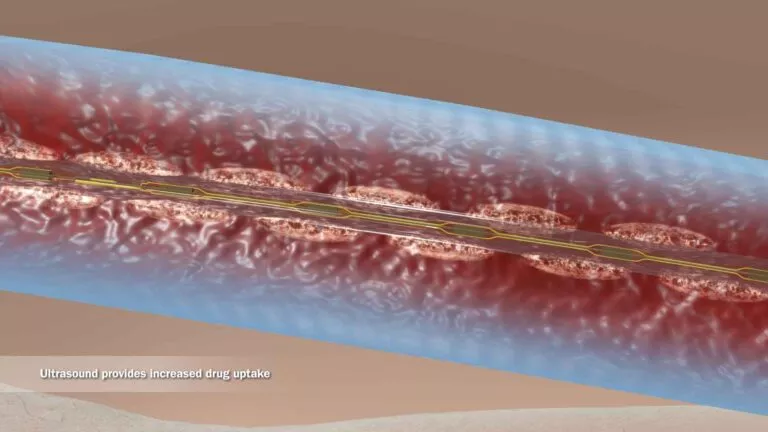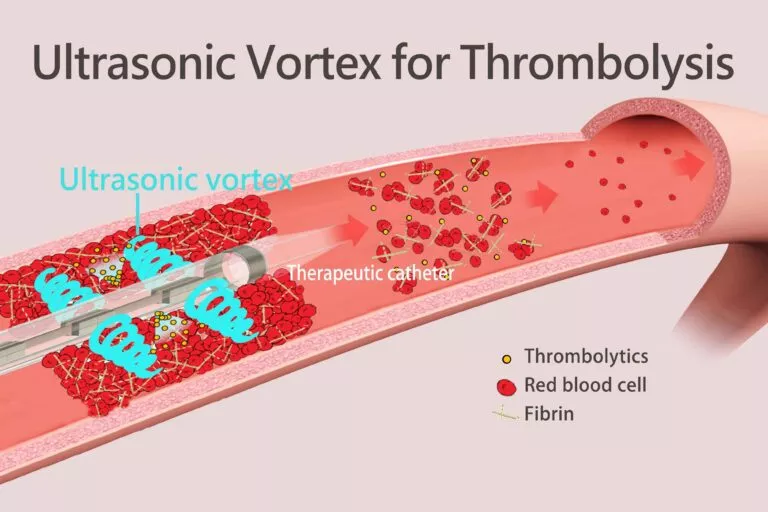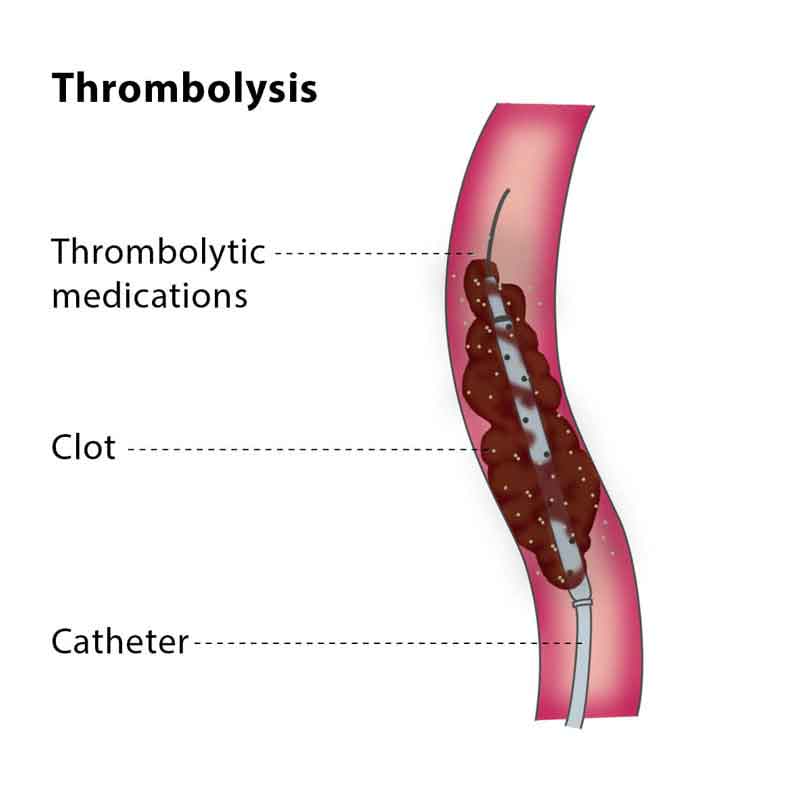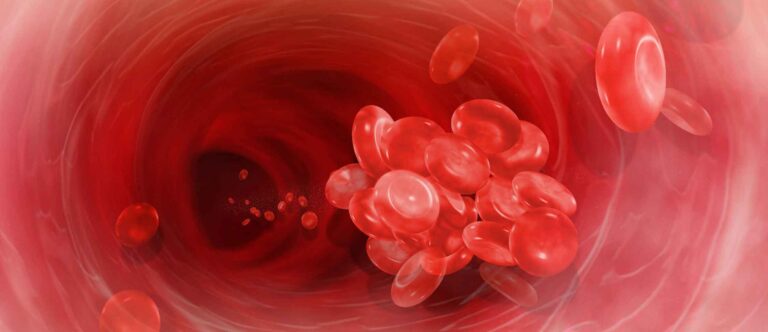WHAT IS THROMBOLYSIS?
Thrombolysis, also called thrombolytic therapy, is a treatment to dissolve dangerous clots in blood vessels, improve blood flow, and prevent damage to tissues and organs.
Thrombolysis might involve the injection of clot-busting drugs through an intravenous (IV) line or through a long catheter that delivers drugs directly to the site of the blockage. It also might involve the use of a long catheter with a mechanical device attached to the tip that either remove the clot or physically breaks it up.
Thrombolysis is usually used as an emergency treatment to dissolve blood clots that form in arteries feeding the heart and brain the primary cause of heart attacks and ischemic strokes and in the arteries of the lungs or acute pulmonary embolism.
Thrombolysis is also used for treating blood clots in :
- Veins that cause deep vein thrombosis (DVT) or clots in the legs, pelvic region, and upper extremities; if left untreated, pieces of the clot could break off and travel to an artery in the lungs, leading to an acute pulmonary embolism.
- Bypass grafts
- Dialysis catheters
If a blood clot is determined to be life-threatening, thrombolysis might be an option if initiated as soon as possible ideally within one to two hours after the beginning of symptoms of a heart attack, stroke, and pulmonary embolism (once a diagnosis has been made).
TYPES OF THROMBOLYSIS
The most commonly used clot-busting drugs also called thrombolytic agents include :
- Eminase (anistreplase)
- Retavase (reteplase)
- Streptase (streptokinase, kabikinase)
- t-PA (class of drugs that includes Activase)
- TNKase (tenecteplase)
- Abbokinase, Kinlytic (rokinase)
Depending on the circumstances, a doctor might choose to inject clot-busting drugs into the access site through a catheter. More often, however, doctors insert a longer catheter into the blood vessel and direct it near the blood clot to deliver medications directly to the clot.
During both types of thrombolysis, doctors use radiologic imaging to check if the blood clot is dissolving. If the clot is relatively small, the process might take several hours. But treatment for a severe blockage might be necessary for several days.
Doctors also might opt for another type of thrombolysis known as mechanical thrombectomy. During this procedure, a long catheter tipped with a small suction cup, rotating device, a high-speed fluid jet, or ultrasound device is used to physically break up the clot.
RISKS OF THROMBOLYSIS
Although thrombolysis could safely and effectively improve blood flow and relieve or eliminate symptoms in many patients without the need for more invasive surgery, it is not recommended for everyone. Thrombolysis might not be recommended for patients who use blood-thinning medication, herbs, or dietary supplements, or for people with certain conditions associated with an increased risk of bleeding. These conditions involve :
- Severe high blood pressure
- Active bleeding or severe blood loss
- Hemorrhagic stroke from bleeding in the brain
- Severe kidney disease
- Recent surgery
Thrombolysis also might be associated with an increased risk of complications in patients who are pregnant or at an advanced age, and in people with other conditions.
Patients who undergo thrombolysis have a small risk of infection (less than one in thousand) as well as a slight risk of an allergic reaction to the contrast dye that might be needed for imaging.
Besides the risk of severe internal bleeding, other possible risks include :
- Bruising or bleeding at the access site
- Damage to the blood vessel
- Migration of the blood clot into another part of the vascular system
- Kidney damage in patients suffering from diabetes or another pre-existing kidney disease
- The most severe possible complication is intracranial bleeding, which is potentially fatal. But this complication is uncommon. Bleeding in the brain that causes stroke occurs in less than one percent of patients.
PROGNOSIS AFTER THROMBOLYSIS
Although thrombolysis is generally successful, the treatment is not able to dissolve the blood clot in up to 25 percent of patients. Another 12 percent of patients subsequently redevelop the clot or blockage in the blood vessel.
In addition to this, thrombolysis alone even when successful cannot treat tissue that has already been damaged by compromised blood circulation. So, further treatment might be needed to address the underlying causes of the blood clot and repair damaged tissues and organs.
If you or anyone you know is suffering from blood clots, our expert providers at Specialty Care Clinics will take care of your health and help you recover.
Call 469-545-9983 to book a telehealth appointment for an at-home check-up.




